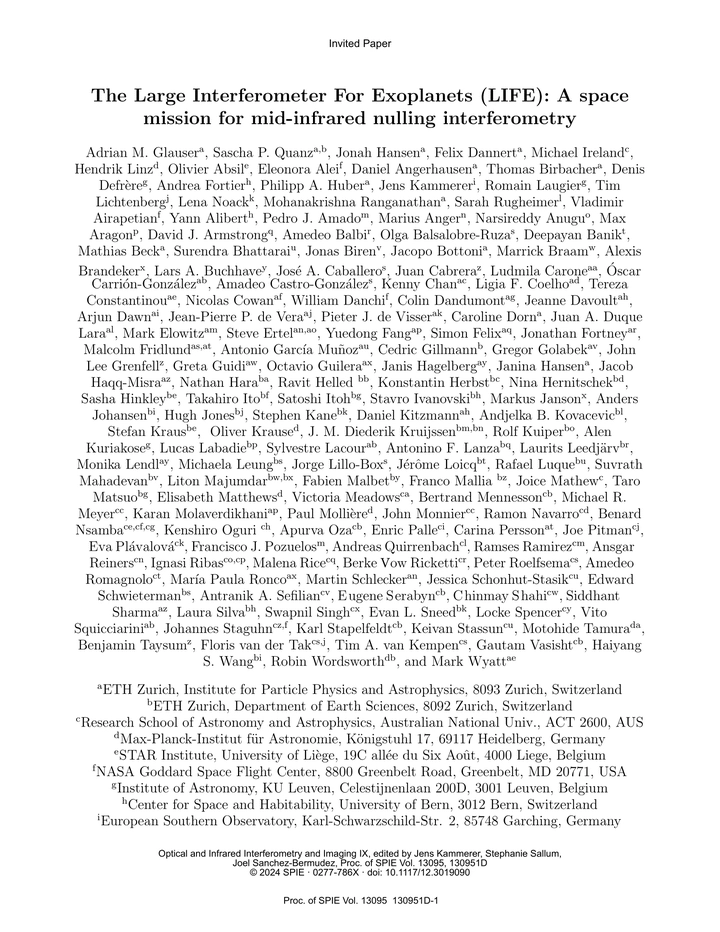The Large Interferometer for Exoplanets (LIFE): A Space Mission for Mid-Infrared Nulling Interferometry

Abstract
The Large Interferometer For Exoplanets (LIFE) is a proposed space mission that enables the spectral characterization of the thermal emission of exoplanets in the solar neighborhood. The mission is designed to search for global atmospheric biosignatures on dozens of temperate terrestrial exoplanets and it will naturally investigate the diversity of other worlds. Here, we review the status of the mission concept, discuss the key mission parameters, and outline the trade-offs related to the mission’s architecture. In preparation for an upcoming concept study, we define a mission baseline based on a free-formation flying constellation of a double Bracewell nulling interferometer that consists of 4 collectors and a central beam-combiner spacecraft. The interferometric baselines are between 10–600m, and the estimated diameters of the collectors are at least 2m (but will depend on the total achievable instrument throughput). The spectral required wavelength range is 6–16 micrometers (with a goal of 4–18.5 micrometers), hence cryogenic temperatures are needed both for the collectors and the beam combiners. One of the key challenges is the required deep, stable, and broad-band nulling performance while maintaining a high system throughput for the planet signal. Among many ongoing or needed technology development activities, the demonstration of the measurement principle under cryogenic conditions is fundamentally important for LIFE.